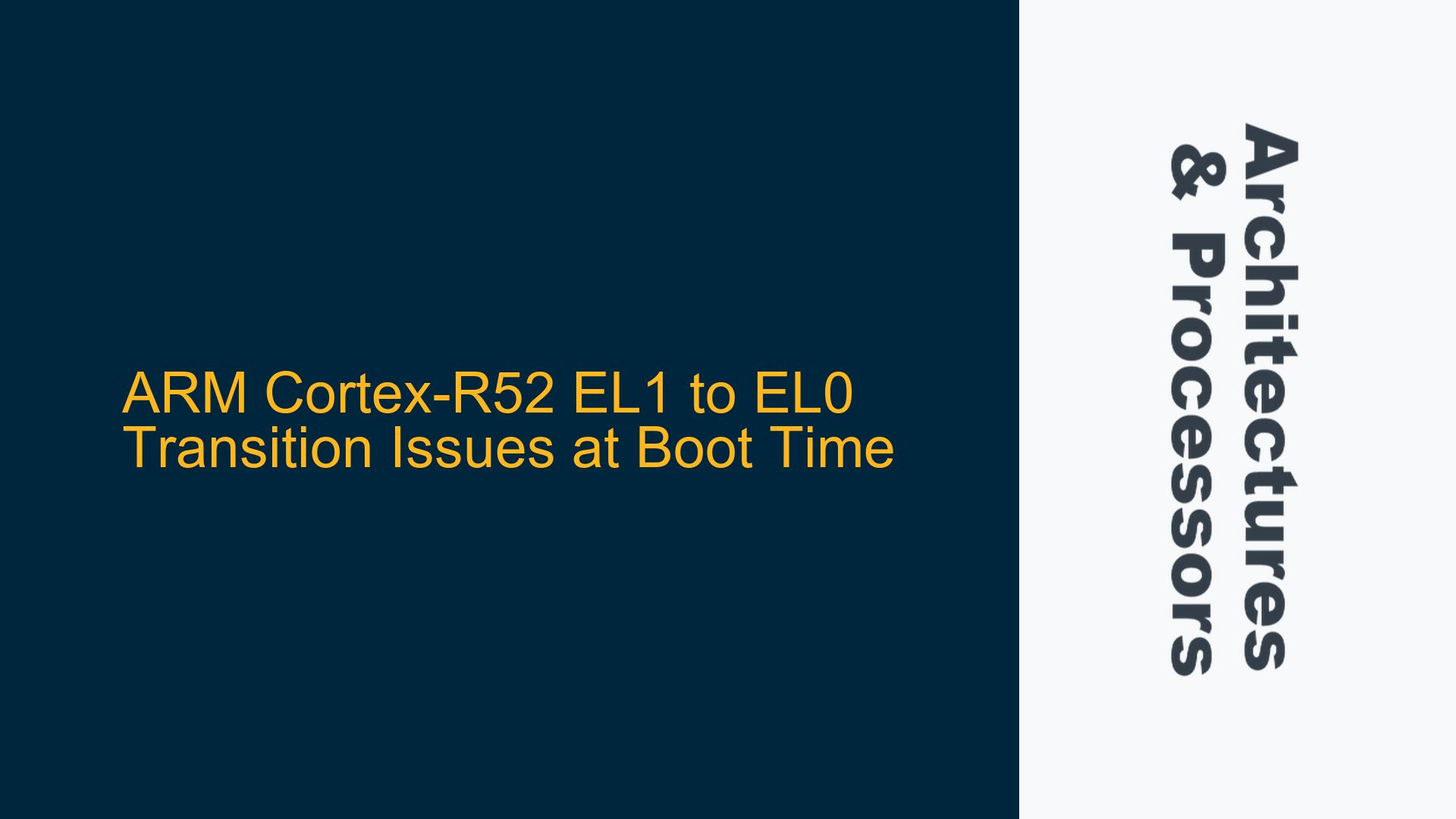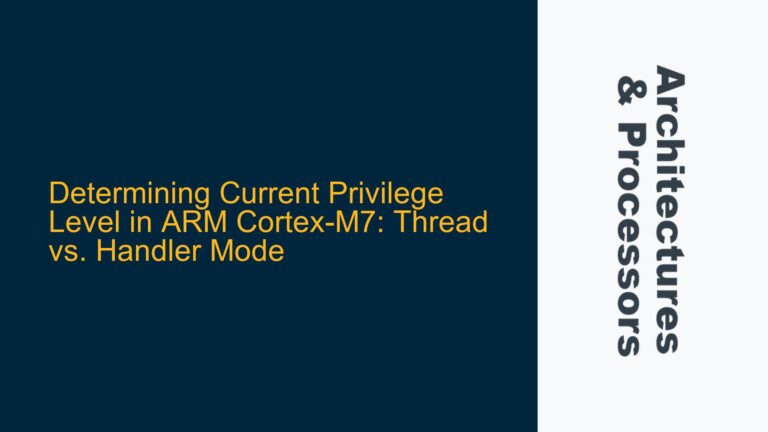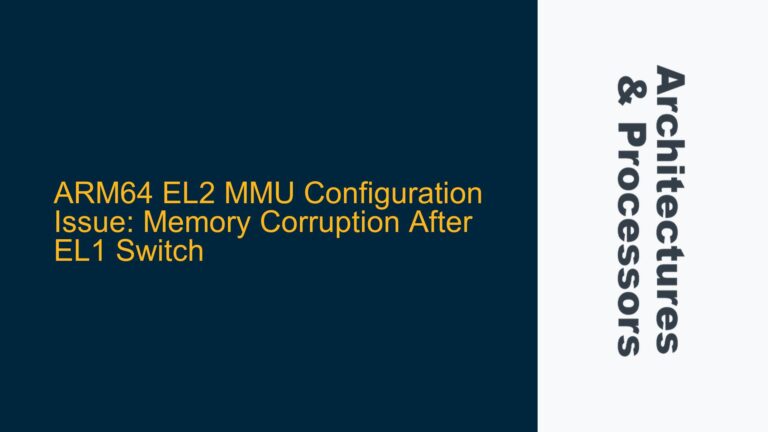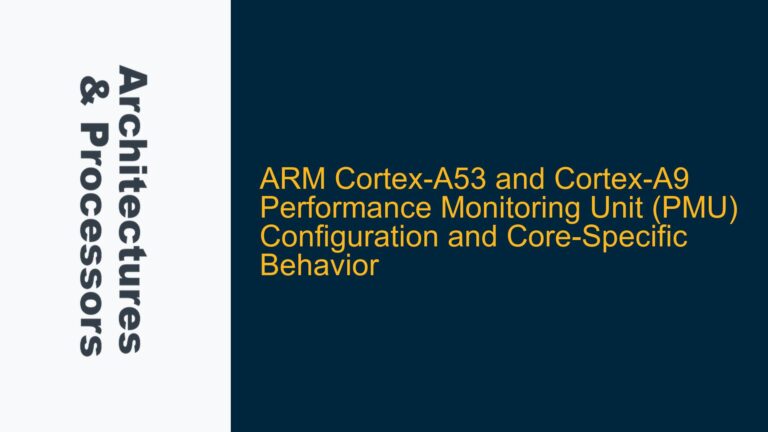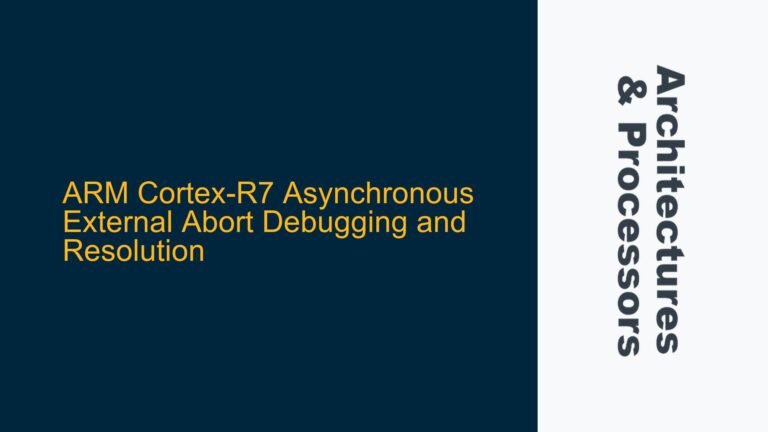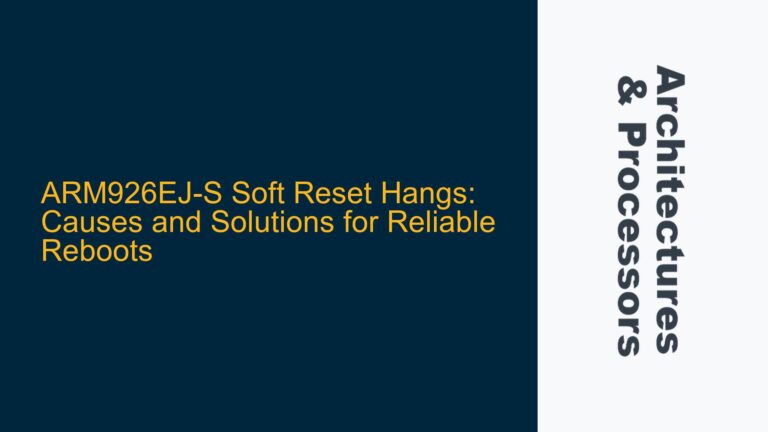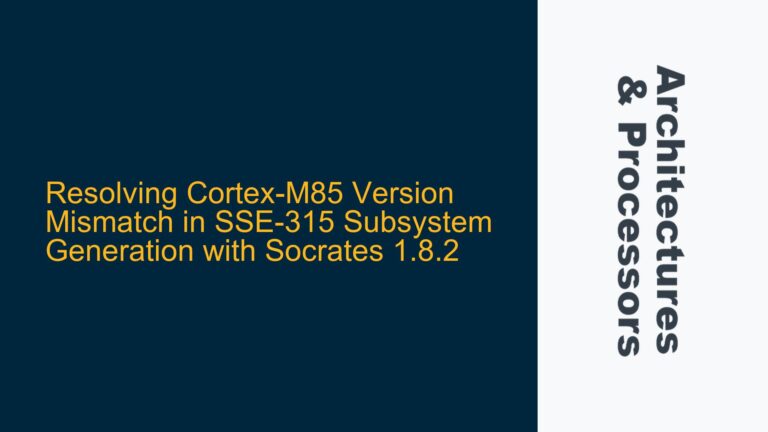ARM Cortex-R52 EL1 to EL0 Transition Challenges During Initialization
The ARM Cortex-R52 processor, part of the Armv8-R architecture, is designed for real-time and safety-critical applications. One of the key features of this architecture is its support for multiple exception levels (ELs), which provide isolation between different software components. However, transitioning from EL1 (supervisor mode) to EL0 (user mode) during the boot process can be problematic, especially when attempting to update the Program Counter (PC) and Current Program Status Register (CPSR) simultaneously. This issue is particularly relevant when trying to prevent code execution in EL0 mode within supervisor memory zones.
The core of the problem lies in the fact that certain instructions, such as ERET (Exception Return), RFE (Return From Exception), and even stack-based CPSR updates (e.g., pop pc^), do not behave as expected during the boot process. While these instructions work correctly during runtime exception handling, they result in unpredictable behavior when used at boot time. This unpredictability manifests as instability in the software, making it difficult to reliably transition to EL0 without triggering an exception or using workarounds like Hypervisor Call (HVC).
The ARM Cortex-R52 architecture introduces additional complexities due to its real-time and safety-critical design. For instance, the processor may boot into EL2 (Hypervisor mode) by default, depending on the configuration. This adds another layer of complexity when attempting to transition directly from EL1 to EL0, as the state of the processor and its registers must be carefully managed to avoid undefined behavior.
Misconfigured Exception Levels and Boot-Time State Mismanagement
The root cause of the issue can be traced to several factors related to the ARM Cortex-R52’s boot-time state and the configuration of exception levels. First, the processor may not be in the expected exception level (EL1) immediately after boot. Depending on the hardware configuration, the Cortex-R52 might boot into EL2, which is typically reserved for hypervisor operations. If the software assumes that the processor is in EL1 and attempts to transition to EL0 directly, this assumption can lead to incorrect behavior.
Second, the state of the Saved Program Status Register (SPSR) and other critical registers may not be properly initialized during the boot process. The SPSR is used to store the processor state when an exception is taken, and its contents are restored when returning from the exception using instructions like ERET or RFE. If the SPSR is not correctly configured before executing these instructions, the processor may enter an undefined state, leading to unpredictable behavior.
Third, the timing and sequence of operations during boot can affect the outcome of the transition. For example, if the stack pointer (SP) is not properly initialized before attempting to pop the CPSR from the stack, the processor may access invalid memory locations, causing instability. Similarly, if the CPSR is not correctly updated before executing the ERET instruction, the processor may not transition to the desired exception level.
Finally, the ARM Cortex-R52’s real-time and safety-critical features, such as memory protection and fault handling, may introduce additional constraints that are not immediately apparent. These features can affect the behavior of instructions like ERET and RFE, especially during the boot process when the system is still initializing.
Properly Configuring Exception Levels and Registers for Stable EL1 to EL0 Transition
To address the issue of transitioning from EL1 to EL0 at boot time on the ARM Cortex-R52, it is essential to follow a structured approach that ensures the processor is in the correct state and that all necessary registers are properly configured. Below are the detailed steps to achieve a stable transition:
Step 1: Verify the Boot-Time Exception Level
Before attempting to transition from EL1 to EL0, it is crucial to verify the current exception level of the processor. This can be done by reading the CurrentEL register, which indicates the current exception level. If the processor is in EL2, it is necessary to first transition to EL1 before attempting to move to EL0. This can be achieved by configuring the Hypervisor Configuration Register (HCR_EL2) and executing an ERET instruction to return to EL1.
Step 2: Initialize the Saved Program Status Register (SPSR)
The SPSR must be correctly configured before executing the ERET or RFE instructions. The SPSR should reflect the desired processor state for EL0, including the mode bits (e.g., user mode) and any other relevant flags. This can be done by writing the appropriate value to the SPSR_EL1 register. For example, to transition to EL0 with interrupts enabled, the SPSR_EL1 should be set to a value that includes the user mode bits and the interrupt enable flags.
Step 3: Set Up the Exception Return Address
The exception return address, which will be loaded into the PC when the ERET or RFE instruction is executed, must be correctly configured. This address should point to the entry point of the EL0 code. The return address can be stored in the Link Register (LR) or on the stack, depending on the specific implementation. For example, if using the ERET instruction, the return address should be loaded into the LR before executing the instruction.
Step 4: Configure the Stack Pointer (SP) for EL0
The stack pointer for EL0 must be properly initialized before transitioning to EL0. This ensures that the processor has a valid stack for executing user-mode code. The SP_EL0 register should be set to the base address of the EL0 stack. If the stack pointer is not correctly initialized, the processor may access invalid memory locations, leading to instability.
Step 5: Execute the ERET or RFE Instruction
Once the SPSR, return address, and stack pointer are correctly configured, the ERET or RFE instruction can be executed to transition to EL0. The ERET instruction will restore the processor state from the SPSR and load the return address into the PC, effectively transitioning the processor to EL0. Similarly, the RFE instruction will pop the return address and SPSR from the stack, achieving the same result.
Step 6: Handle Potential Boot-Time Constraints
Given the real-time and safety-critical nature of the ARM Cortex-R52, it is important to consider any additional constraints that may affect the boot process. For example, memory protection units (MPUs) or fault handling mechanisms may need to be configured before transitioning to EL0. Additionally, any pending interrupts or exceptions should be cleared to ensure a smooth transition.
Step 7: Use HVC as a Workaround (If Necessary)
If the above steps do not resolve the issue, using an HVC instruction to trigger an exception and then returning from it can serve as a workaround. This approach ensures that the processor state is correctly managed during the transition. The HVC instruction can be used to enter EL2, where the necessary configurations can be made before returning to EL1 and then transitioning to EL0.
Step 8: Validate the Transition with Debugging Tools
Finally, it is essential to validate the transition using debugging tools such as JTAG or trace debugging. These tools can provide insights into the processor state and help identify any issues that may arise during the transition. By carefully analyzing the debug output, it is possible to ensure that the processor is correctly transitioning to EL0 and that the software is stable.
By following these steps, it is possible to achieve a stable transition from EL1 to EL0 at boot time on the ARM Cortex-R52. Properly configuring the exception levels, registers, and stack pointers, along with careful consideration of the processor’s real-time and safety-critical features, is key to ensuring a successful transition.
